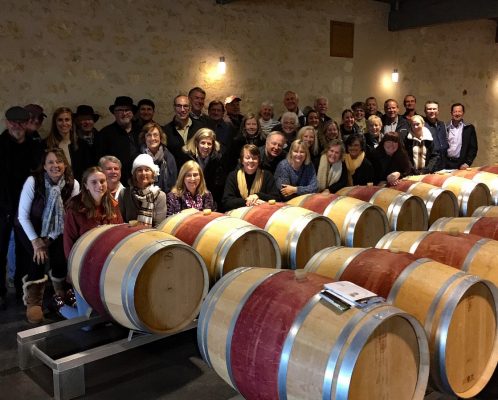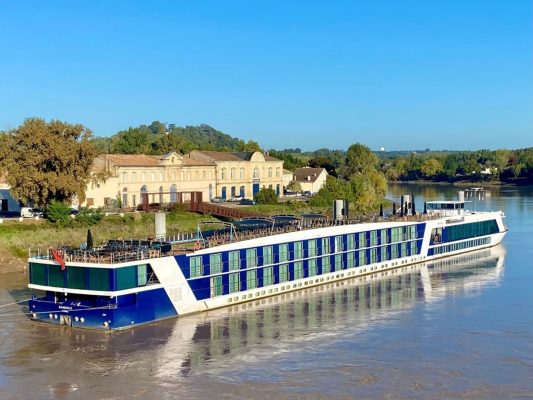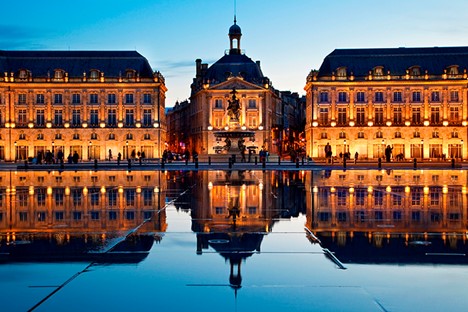Wine has been made in the Bordeaux region of southwest France since the Romans settled in the area in 60 BC. The Romans were the first to plant vineyards (possibly obtained from Rioja, Spain). By the 1st century AD, the regional wines were appreciated and distributed to Roman soldiers and citizens in Gaul and Britain. In Pompeii, fragments of Amphorae have been discovered that mention Bordeaux. The region’s ideal combination of soil, a marine climate, and easy river access along the Garonne made it perfect for wine cultivation—a rich legacy now enjoyed on a Bordeaux river cruise.
In 1152, the heir to the Duchy of Aquitaine, Eleanor of Aquitaine, married the future king of England, Henry Plantagenet, later known as King Henry II. Under their reign Bordeaux grew into a large city. By the 14th century Bordeaux wines were exported to England for the pleasure of King Edward I.
King Richard the Lionheart, the son of Eleanor and Henry II, made Bordeaux wine his everyday beverage. The medieval British wine-buying public agreed. “If it’s good enough for the King, it’s good enough for me.” This was the start of the British becoming wine lovers.
Producing one-third of France’s quality wine, Bordeaux wines are blended from three grapes: Merlot, Cabernet Sauvignon and Cabernet Franc. Climate change influences the quality of wine and frequently determines premium wine-growing regions around the world. The optimal climate for growing grapes that can be made into high quality wine features wet, mild to cool winters, followed by warm springs then warm to hot summers with little precipitation.
The two most renowned Bordeaux AVAs are Pauillac and St. Emilion. Here is some background about these legendary wines and the famous Grand Cru chateaux there:

Pauillac
Pauillac is the main town in the Haut-Medoc appellation of Bordeaux. This is one the greatest and most important wine growing regions on earth, home to grand Châteaux, manicured gardens, wine-industry wealth and a collection of fine red wines unrivalled in terms of overall quality. Pauillac is the face of Bordeaux. The wines of Pauillac are known for extremely high standards of quality, along with some ridiculously high prices as well. There are few other wines that can boast of being so enjoyable when young yet also improve in the bottle for decades. On French wine river cruises, visitors can experience Pauillac firsthand, savoring these iconic wines and the region’s storied winemaking legacy.
Pauillac is Bordeaux’s most acclaimed appellation, the only Bordeaux appellation with three Premier Cru properties: Château Lafite-Rothschild, Château Mouton-Rothschild and Château Latour. These and other Pauillac chateaux produce robust, full-flavored and long-lived red wines made from Cabernet-based blends.
These wines are a blend of Cabernet Sauvignon, with smaller percentages of Merlot, Cabernet Franc and Petite Verdot. The appellation is divided in half by a small stream called the Pibran. In the ancient world the vineyards here were renowned for producing delicious wines, some 2,000 years ago. Draining the swampy Gironde Estuary revealed mounds of heavy gravel that became the terroir for benchmark wines made from Cabernet Sauvignon. Gravel soil, mixed with touches of sand, limestone and iron in certain spots, provides just enough nutrients and minerals to give the wines a combination of finesse, elegance, and intensity rarely matched elsewhere.

St. Emilion
Situated on a hilltop, St.-Emilion was designated in 1999 as a UNESCO World Heritage Site. This charming village is the heart of the Libournais district; equally gratifying to both the eyes and the palette with its world-class wines and gastronomy. Join us!
Located on the right bank of the river Dordogne, Saint-Émilion is a must-see medieval attraction. Intriguing Romanesque architecture and ruins are abundant. The village’s namesake is from an 8th century Benedictine monk who made his home in a nearby forest. We’ll visit the Monolithic Church, the oldest of its kind in Europe, and the Roi Tower which dates back to the 13th century.
For Merlot lovers, there is reason to rejoice in sampling lush, full-bodied wine with the finest flavors of blackberry, blueberry and hints of chocolate. A secondary but top-tier wine choice of Saint-Émilion is aromatic, spicy Cabernet Franc, which along with Merlot, accounts for about 60% of planting in the region. Legendary wineries, such as Château Pavie and Château Angelus are here, open to demonstrate and pour their fine selections.
Discovering Saint-Émilion is easy by foot or bicycle. The ship carries about 20 bicycles. Cycling through the châteaux amid lovely scenery makes for a memorable day. Stroll ancient cobblestone streets to visit fine wine shops, boutiques and family-run cafes.
TIP: Wear comfy flat shoes for walking.
Join an Expanding Horizons cruise of the waterways of Bordeaux. See what’s available at: https://toursandwine.com/trip-calendar/

